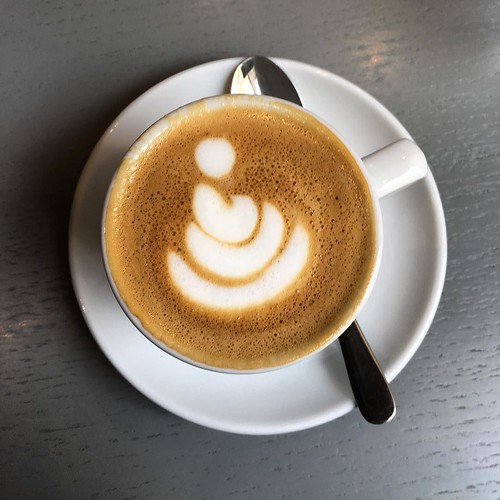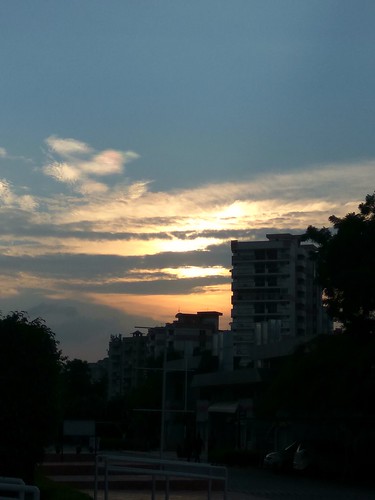Owed up by protein structure studies to reveal the true binding domains and activation sites on the protein.Ssk2p Plays Essential Role in Salt TolerancePrevious studies have demonstrated the Calciferol redundant role of Ssk2p and Ssk22p. Actually, upon nonionic osmotic stress, the Ssk2p and Ssk22p can function equally well. However when subjected to the ionic osmotic stress, the double mutants display different tolerance. The yeast cells which grow in the presence of high sodium concentrations (salt stress) face both an elevated external osmotic environment and an increasing amount of Na+ entering the cells [37]. We have conducted a series of growth assay studies for the wild type and mutant cells under various  levels of salt stress, with the results presented in Figure 6. The mutant ssk2Dssk22D, ste11Dssk2D and ste11Dssk22D showed no growth defect under severe osmotic Fexinidazole biological activity stress (1.2 M sorbitol and 1.2 M KCL) (Figures 6A, 6E). However, the mutant ste11Dssk2D showed poorer growth when exposed to the poison level of cation (0.8 M NaCL and 0.3 M LiCL), which indicates that Ssk2p and Ste11p are essential for salt-tolerance (Figure 6A, 6B, and 6C). Actually, the mutant ste11Dssk2D grows as well as the wild type strain even when being exposed to 1.2 M sorbitol or 1.2 M KCL (Figures 6A and 6E). The mutant ste11Dssk1D also displayed severe growth defect upon sodium stress, even the phosphorylation level of Hog1p under osmotic stress caused by NaCL was similar or slightly higher than
levels of salt stress, with the results presented in Figure 6. The mutant ssk2Dssk22D, ste11Dssk2D and ste11Dssk22D showed no growth defect under severe osmotic Fexinidazole biological activity stress (1.2 M sorbitol and 1.2 M KCL) (Figures 6A, 6E). However, the mutant ste11Dssk2D showed poorer growth when exposed to the poison level of cation (0.8 M NaCL and 0.3 M LiCL), which indicates that Ssk2p and Ste11p are essential for salt-tolerance (Figure 6A, 6B, and 6C). Actually, the mutant ste11Dssk2D grows as well as the wild type strain even when being exposed to 1.2 M sorbitol or 1.2 M KCL (Figures 6A and 6E). The mutant ste11Dssk1D also displayed severe growth defect upon sodium stress, even the phosphorylation level of Hog1p under osmotic stress caused by NaCL was similar or slightly higher than  that caused by the sorbitol or KCL (Figures 1A, 1D, 1F and 6B). The results imply that for salt tolerance, not only activation of Hog1p is required but MAPKKKs Ste11p and Ssk2p also play an important role. Although Ssk2p and Ssk22p are highly homologous, the Ssk2p shows better salt-tolerance than Ssk22p. Furthermore, high level activation of Ssk2p is also required for the salt tolerance. As we discussed above, X factor can activate Ssk2p independent of Ssk1p and enhance the activation of Ssk2p by Ssk2p under osmotic stress. Here we found that the level of osmoresistance is slightly different between wild type Ssk2p cells and Ssk2D(1,240) cells (Figure 6D). Lacking the binding site (amino acid 177,240aa) for the X factor of Ssk2p would reduce the saltresistance of the ste11Dssk22D cells (Figure 6D). The results indicate that the high level activation of Ssk2p is essential for saline-resistance.Alternative Activation of Ssk2p in Osmotic StressAcknowledgmentsThe authors would like to thank staffs of Department of Biology, Hong Kong Baptist University for technical support. We would like to thank all the members of the lab in Department of Biology, Hong Kong Baptist University for helpful comments.Author ContributionsProvided the working conditions including the reagents, buying materials, etc.: JZ. Provided critical reading of the manuscript: YX LT JZ. Conceived and designed the experiments: HZ. Performed the experiments: HZ. Analyzed the data: HZ LT. Wrote the paper: HZ.
that caused by the sorbitol or KCL (Figures 1A, 1D, 1F and 6B). The results imply that for salt tolerance, not only activation of Hog1p is required but MAPKKKs Ste11p and Ssk2p also play an important role. Although Ssk2p and Ssk22p are highly homologous, the Ssk2p shows better salt-tolerance than Ssk22p. Furthermore, high level activation of Ssk2p is also required for the salt tolerance. As we discussed above, X factor can activate Ssk2p independent of Ssk1p and enhance the activation of Ssk2p by Ssk2p under osmotic stress. Here we found that the level of osmoresistance is slightly different between wild type Ssk2p cells and Ssk2D(1,240) cells (Figure 6D). Lacking the binding site (amino acid 177,240aa) for the X factor of Ssk2p would reduce the saltresistance of the ste11Dssk22D cells (Figure 6D). The results indicate that the high level activation of Ssk2p is essential for saline-resistance.Alternative Activation of Ssk2p in Osmotic StressAcknowledgmentsThe authors would like to thank staffs of Department of Biology, Hong Kong Baptist University for technical support. We would like to thank all the members of the lab in Department of Biology, Hong Kong Baptist University for helpful comments.Author ContributionsProvided the working conditions including the reagents, buying materials, etc.: JZ. Provided critical reading of the manuscript: YX LT JZ. Conceived and designed the experiments: HZ. Performed the experiments: HZ. Analyzed the data: HZ LT. Wrote the paper: HZ.
The continuing world-wide increase in drug resistance among many classes of pathogenic microbes has created a need for new antibiotic, antiviral and anti-parasitic therapies. Photodynamic therapy is an effective tool for the photoinactivation of bacteria, viruses, fungi and parasites [1,2,3] as well as for cancer treatment [4]. The photodynamic effect is due to the oxidative damage caused to biological materials by reactive forms of oxygen, predominantly singlet oxygen, O2(1Dg), that are generated by photosensitized.Owed up by protein structure studies to reveal the true binding domains and activation sites on the protein.Ssk2p Plays Essential Role in Salt TolerancePrevious studies have demonstrated the redundant role of Ssk2p and Ssk22p. Actually, upon nonionic osmotic stress, the Ssk2p and Ssk22p can function equally well. However when subjected to the ionic osmotic stress, the double mutants display different tolerance. The yeast cells which grow in the presence of high sodium concentrations (salt stress) face both an elevated external osmotic environment and an increasing amount of Na+ entering the cells [37]. We have conducted a series of growth assay studies for the wild type and mutant cells under various levels of salt stress, with the results presented in Figure 6. The mutant ssk2Dssk22D, ste11Dssk2D and ste11Dssk22D showed no growth defect under severe osmotic stress (1.2 M sorbitol and 1.2 M KCL) (Figures 6A, 6E). However, the mutant ste11Dssk2D showed poorer growth when exposed to the poison level of cation (0.8 M NaCL and 0.3 M LiCL), which indicates that Ssk2p and Ste11p are essential for salt-tolerance (Figure 6A, 6B, and 6C). Actually, the mutant ste11Dssk2D grows as well as the wild type strain even when being exposed to 1.2 M sorbitol or 1.2 M KCL (Figures 6A and 6E). The mutant ste11Dssk1D also displayed severe growth defect upon sodium stress, even the phosphorylation level of Hog1p under osmotic stress caused by NaCL was similar or slightly higher than that caused by the sorbitol or KCL (Figures 1A, 1D, 1F and 6B). The results imply that for salt tolerance, not only activation of Hog1p is required but MAPKKKs Ste11p and Ssk2p also play an important role. Although Ssk2p and Ssk22p are highly homologous, the Ssk2p shows better salt-tolerance than Ssk22p. Furthermore, high level activation of Ssk2p is also required for the salt tolerance. As we discussed above, X factor can activate Ssk2p independent of Ssk1p and enhance the activation of Ssk2p by Ssk2p under osmotic stress. Here we found that the level of osmoresistance is slightly different between wild type Ssk2p cells and Ssk2D(1,240) cells (Figure 6D). Lacking the binding site (amino acid 177,240aa) for the X factor of Ssk2p would reduce the saltresistance of the ste11Dssk22D cells (Figure 6D). The results indicate that the high level activation of Ssk2p is essential for saline-resistance.Alternative Activation of Ssk2p in Osmotic StressAcknowledgmentsThe authors would like to thank staffs of Department of Biology, Hong Kong Baptist University for technical support. We would like to thank all the members of the lab in Department of Biology, Hong Kong Baptist University for helpful comments.Author ContributionsProvided the working conditions including the reagents, buying materials, etc.: JZ. Provided critical reading of the manuscript: YX LT JZ. Conceived and designed the experiments: HZ. Performed the experiments: HZ. Analyzed the data: HZ LT. Wrote the paper: HZ.
The continuing world-wide increase in drug resistance among many classes of pathogenic microbes has created a need for new antibiotic, antiviral and anti-parasitic therapies. Photodynamic therapy is an effective tool for the photoinactivation of bacteria, viruses, fungi and parasites [1,2,3] as well as for cancer treatment [4]. The photodynamic effect is due to the oxidative damage caused to biological materials by reactive forms of oxygen, predominantly singlet oxygen, O2(1Dg), that are generated by photosensitized.
